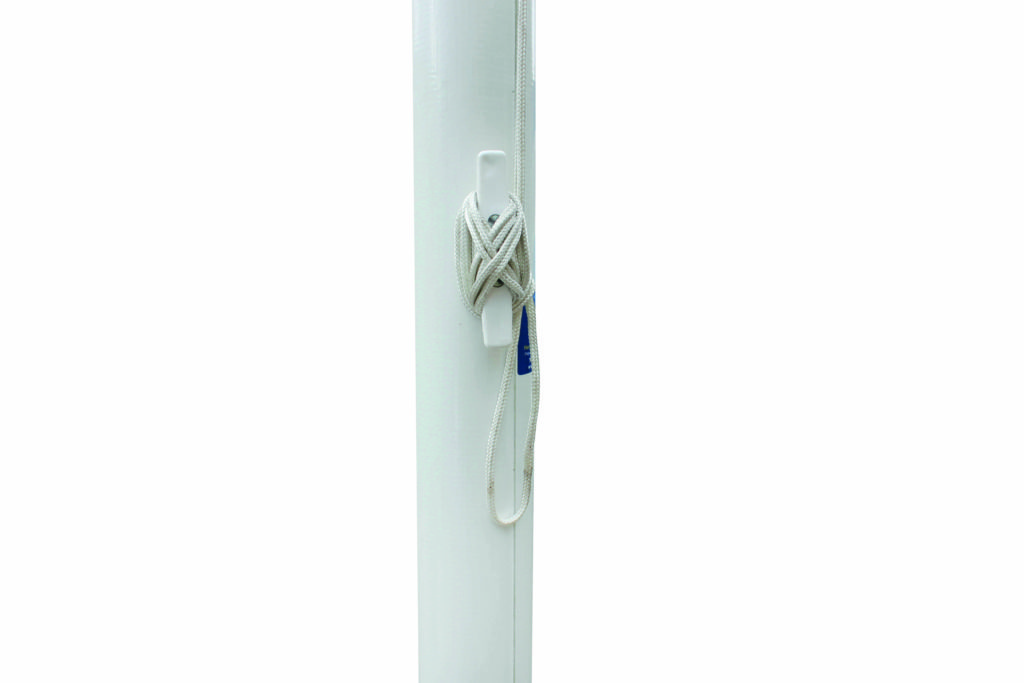

X
This site uses cookies. By continuing to use this site you agree to our use of cookies. To find out more, see our Privacy Policy and Cookie Policy.

Introducing a flagpoles to your garden is a charming way to add personality and flair to your outdoor space. It can seem a daunting task, but this guide will take you through your option to help you choose the right flagpoles for you. Plus we’ll discuss maintenance and any regulations you need to be aware of.
Determine the right height for your garden flagpole. Our most popular size garden flagpole is 6m. This is the perfect height for most family homes, and is just taller than the gutter on a two-storey house. For a flagpole to completement a stately or three-storey home, an 8m pole would work well. Our garden flagpoles are installed using a ground sleeve. With this type of installation you lose approximately 10% of the pole length into the ground. Our delivery range takes this into consideration with a longer pole. With a deluxe 6m pole, the full 6m will be visible above the ground. A 6m classic or executive pole will have approximately 5.4m of pole visible.

The shape you choose for your garden flagpole is down to personal preference. You can choose from straight (classic range), step-tapered (deluxe range) or tapered (executive range). Each shape has a different maximum wind speed tolerance. This should be taken into consideration when thinking about the flagpole’s location. The tapered pole is our recommendation for coastal areas, where it tends to be windier.
The straight pole can withstand wind speeds up to 75mph when unflagged. It’s available in one or two pieces. The step-tapered pole has a maximum wind speed of 75mph when unflagged. It comes in two sections, joined with a step-tapered pole joint. The tapered pole tapers from 100mm in diameter at its base to 65mm in diameter at the top. Its shiny white appearance gives any home the extra touch of elegance. It can withstand wind speeds of up to 85mph, unflagged. It is only available in one piece.
Garden flagpoles from Harrison Flagpoles are available in glassfibre or aluminium. Glassfibre is a reinforced plastic material which is comprised of a woven material that’s embedded with glassfibres. These poles are resistant to moisture, humidity, salt and pollutants. They can be washed down with mild detergent to maintain its appearance.
Our aluminium poles are 60mm in diameter and have a 2.5mm wall thickness. Prolonged weather exposure may lead to staining over time. Aluminium flagpoles can be recycled at the end of their life.
The halyard is the toping system used to fly your flag. The external halyard places the rope on the outside of the flagpole. It will be exposed to the elements, but will make it quicker and easier to raise and lower the flag. The halyard is tied off using a cleat. An internal halyard conceals the rope inside the flagpole itself. A small, lockable door provides access. This gives a more streamlined look and increases the security of your flag.
If you’ve chosen our classic aluminium pole, you now need to choose whether you’d like an internal or external halyard. All our other pole ranges have an external roping system as standard.

The finishing touches you can add to your garden flagpole can add a touch of elegance to your pole. Flagpoles are finished with a finial on the top. You can choose between a white mushroom or a gold onion. Both finials are made from strong plastics to reduce maintenance.
Our 6m garden flagpoles are designed to fly a 2-yard flag. When your flagpole is chosen, you’ll need to decide on which flag to fly. You may choose your county’s flag to fly, or one of our Home Nations or other national flags. Alternatively, our custom flag option allows you to design your own flag, for example your family crest. We have a range of print options available, including digital print, hand-sewn or our eco-friendly Harrison Eco material.

Dirt and debris can cause wear over time, so regular cleaning is essential. You should inspect for cracks, rust or other signs of wear, particularly after sever wind or rain. Flags should be removed from the flagpole before bad weather hits, to prevent unnecessary damage.
We recommend weekly, six monthly and yearly checks to keep you flagpole looking its best. Many of the checks can be completed easily by yourselves. However we recommend a yearly inspection, by specialists like ourselves, to make sure your flagpole looks its best. Beyond this, maintaining your flagpole reduces the risk of the halyard failing and extends the life of the moving parts.
There are some restrictions to installing flagpoles within the UK. These extend to flagpoles at residences as well as other buildings. The key restriction is for the height of a flagpole. The flagpole should not be taller than 4.6m above ground level. It is possible for taller flagpoles to be installed, however planning permission will be required. The exact height of flagpole that is permitted without planning permission may vary by local councils.
Any flags flown must be kept in a well-maintained condition. The flagpoles position must not obscure any official highways or other signage, including when a flag is flown.
There are additional regulations regarding which flags may be flown without consent. Some flags require no consent and are subject to no further restrictions. These include:
It is permitted to fly two flags on the same flag pole, if they are both from the above list. It is also possible if one flag is from the above list and one from the following list. It should be remembered that if the Union flag is one of the flags flown on the pole, it must be in the top position.
Some flags are permitted to be flown without consent, subject to certain restrictions. These restrictions surround the size of the flag, the size of the characters on the flag and the number and location of flagpoles. These include flags depicting the logos, name or trademark of the company located at the site of the flagpole. It also includes the NHS flag, the Rainbow flag, sports club emblems (not including sponsorship logos) and flags of specified award schemes.
All flags that are not classified above will require permission to be flown.
Further guidance on the regulations surrounding flagpoles and flag flying can be found on the government website.
—
Looking to purchase a flagpole for your garden? Contact our knowledgeable team who are on-hand to answer any questions you have!